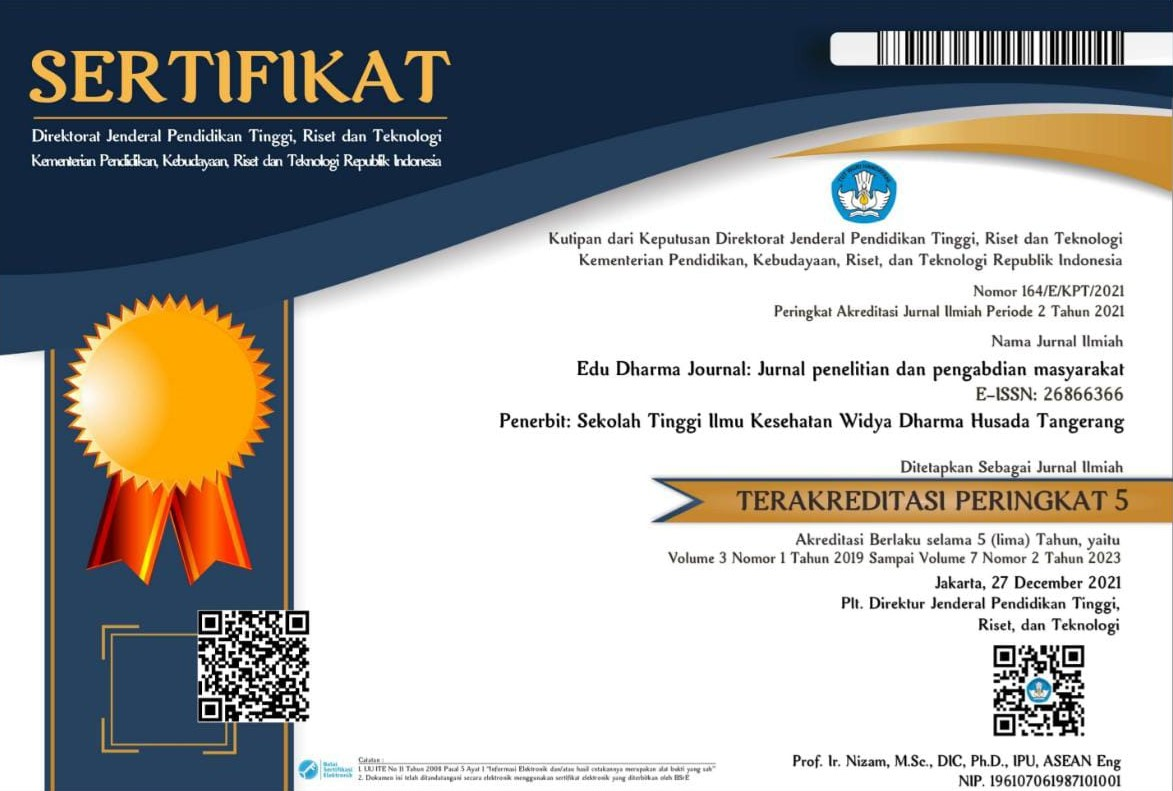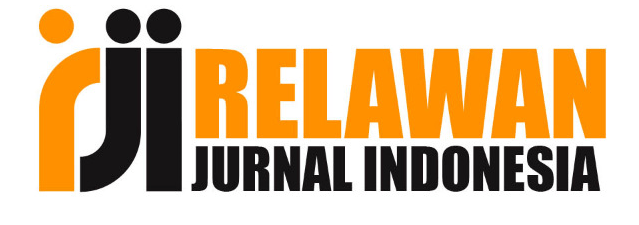HUBUNGAN PENGARUH TEMAN DENGAN FREKUENSI KONSUMSI FAST FOOD MODERN PADA MAHASISWA UNIVERSITAS XYZ DI KOTA DEPOK
Abstract
ABSTRACT
Excessive consumption of fast food can increase the incidence of obesity and other health problems in adolescents. Eating fast food more than twice per week can increase BMI z-score significantly, compared to eating fast food once a week or not eating fast food at all. This study aims to determine the relationship between the influence of friends with the frequency of modern fast food consumption among students XYZ University in Depok. The research method used is quantitative with cross-sectional study design conducted to 148 students XYZ University Depok selected by systematic random sampling. It used questionnaire about individual characteristics, food characteristics, and environmental characteristics, while data of frequency fast food consumption from FFQ. Result showed that 51,4% of respondents consumed fast food often. Furthermore, there is a difference proportion in the influence of friends (p = 0.001) in determining the frequency of fast food consumption. Students with strong friend influences are 3.6 times more likely to eat fast food more often compared to poor friend influences.
ABSTRAK
Konsumsi fast food yang berlebihan dapat meningkatkan kejadian obesitas dan masalah kesehatan lainnya pada remaja. Mengonsumsi fast food lebih dari dua kali per minggu dapat meningkatkan BMI z-score secara signifikan, dibandingkan dengan yang mengonsumsi fast food seminggu sekali atau tidak mengonsumsi fast food sama sekali. Penelitian ini bertujuan untuk mengetahui hubungan faktor pengaruh teman dengan frekuensi konsumsi fast food modern pada mahasiswa Universitas XYZ di Kota Depok. Metode penelitian yang digunakan adalah kuantitatif dengan desain studi cross-sectional yang dilakukan kepada 148 mahasiswa Universitas XYZ yang dipilih dengan systematic random sampling. Data karakteristik diperoleh dari kuesioner, sedangkan data frekuensi konsumsi fast food diperoleh dari FFQ. Hasil penelitian ini menunjukkan sebanyak 51,4% responden mengonsumsi fast food dengan frekuensi sering. Terdapat perbedaan proporsi pada pengaruh teman (p=0,001) dalam menentukan frekuensi konsumsi fast food. Mahasiswa dengan pengaruh teman yang kuat berpeluang 3,6 kali lebih sering mengonsumsi fast food dibandingkan mahasiswa dengan pengaruh teman lemah.
Keywords
Full Text:
PDFReferences
Anderson B, Rafferty AP, Lyon-Callo S, Fussman C, Imes G. Fast-food consumption and obesity among Michigan adults. Prev Chronic Dis 2011;8(4):A71.
Bauer, K.W., Larson, N.I., Nelson, M.C., et al. Fast food intake among adolescents: secular and longitudinal trends from 1999 to 2004. American Journal of Preventive Medicine. 2009. 48: 284–287.
Brindal, Emily. Exploring Fast Food Consumption Behaviours and Social Influence. Faculty of Health Science, the University of Adelaide,.South Australia. 2010.
Brown, J.E. Nutrition throught the life cycle. Fourth edition. W adsworth. California. 2010.
Dave, Jayna M., Lawrence C An, Robert W Jeffery, & Jasjit S.A. Relationship of Attitudes Toward Fast Food and Frequency of Fast-food Intake in Adults. Obesity. 2009. 17: 1164-1170.
El Ansari, W., Stock, C., & Mikolajczyk, R. T. Relationships between food consumption and living arrangements among university students in four European countries - A cross-sectional study. Nutrition Journal. 2012. 11: 28.
Forsyth, A., Wall, M., Larson, N., Story, M., & Dianne, N-S. Do adolescent who live or go to school near fast food restaurant eat more frequently from fast food restaurant? Journal of Health and Place. 2012. 18: 1261–1269.
Garcia, G., Sunil, T.S. & Hinojosa, P. The Fast Food and Obesity Link: Consumption Patterns and Severity of Obesity. OBES SURG .2012. 22: 810.
Harris KM, Gordon-Larsen P, Chantala K, Udry JR. Longitudinal trends in race/ethnic disparities in leading health indicators from adolescence to young adulthood. Arch Pediatr Adolesc Med. 2006. 160:74–81.
Kementerian Kesehatan, R.I. Peraturan Menteri Kesehatan Republik Indonesia Nomor 30 Tahun 2013 Tentang Pencantuman Informasi Kandungan Gula, Garam, Dan Lemak Serta Pesan Kesehatan Untuk Pangan Olahan Dan Pangan Siap Saji. Jakarta. 2013.
Kremmyda LS, Papadaki A, Hondros G, Kapsokefalou M, Scott JA. Differentiating between the effect of rapid dietary acculturation and the effect of living away from home for the first time, on the diets of Greek students studying in Glasgow. Appetite. 2008. 50:455–463.
Kwate, N.O.A., & Loh, J.M. Separate and unequal: the influence of neighborhood and school characteristic on spatial proximity between fast food and schools. Journal of Preventive Medicine. 2010. 51: 153–156.
Longacre, M.R. et al. Fast-food environments and family fast-food intake in nonmetropolitan areas. American Journal of Preventive Medicine. 2012. 42 (6): 579–587.
Marhamah, Ron Makrony, Eko Yuliastuti. Analisis Faktor-Faktor Dominan Yang Mempengaruhi Keputusan Remaja Untuk Mengonsumsi Makanan Fast Food. Penelitian Dosen Pemula, Universitas Terbuka. 2013.
Mirsanjari, Mitra, et al. Relationship between nutritional knowledge and healthy attitude and practice during pregnancy. Borneo science. 2012.
Pascaramadhani, Addini. Faktor dominan frekuensi konsumsi fast food siswa SMA Islamic Village tahun 2014. Skripsi Fakultas Kesehatan Masyarakat, Universitas Indonesia. 2014.
Pereira, M. A, A. I. Kartashov, C. B. Ebbeling, L.Van Horn, M. L. Slattery, D. R. Jacobs Jr., and D. S. Ludwig. Fast-Food Habits, Weight Gain, and Insulin Resistance (The CARDIA Study): 15-Year Prospective Analysis. The Lancet. 2005. 365(9453): 36–42.
Putri, Nabila Marsya Syaihu. Faktor dominan frekuensi konsumsi fast food pada mahasiswa FISIP UI tahun 2016. Skripsi Fakultas Kesehatan Masyarakat, Universitas Indonesia. 2016.
Seo, H., Lee, S.-K., & Nam, S. Factors influencing fast food consumption behaviors of middle-school students in Seoul: an application of theory of planned behaviors. Nutrition Research and Practice. 2011. 5(2): 169–178.
Sharkey, Joseph R, Johnson, Cassandra M., Wesley R, Dean, & Horel, Scott A. Association between proximity to and coverage of traditional fast- food restaurants and nontraditional fast-food outlets and fast-food consumption among rural adults. International Journal of Health Geographics. 2011. 10: 37.
Steinburg L. Adolescence. McGraw-Hill. New York. 1996.
Story, M., Neumark-Sztainer, D., & French, S. Individual and environmental influences on adolescent eating behaviors. American Journal of Diet Association. 2002. 102: S40-S51.
Suhardjo. Sosio Budaya Gizi. Bogor: IPB PAU Pangan dan Gizi. 1989.
Surya, Ade Permata. Faktor Dominan dalam Menentukan Frekuensi Konsumsi Fast Food Modern pada Siswa-Siswi SMA Negeri di Kecamatan Tangerang Kota, Kota Tangerang Tahun 2013. Skripsi Fakultas Kesehatan Masyarakat, Universitas Indonesia. 2013.
Thompson, O. M., Ballew, C., Resnicow, L., Must, A., Badini, L. G., Cyr, H., & Dietz, W. H. Food purchased away from home as a predictor of change in BMI z-score among girls. International Journal of Obesity. 2004. 28: 282-289.
Vaida, Naheed. Prevalence of Fast Food Intake among Urban Adolescent Students. The International Journal of Engineering and Science. 2013. 2 (1): 353-359.
Van Zyl, MK, Steyn NP , Marais ML. Characteristics and factors influencing fast food intake of young adult costumers in Johannesburg, South Africa. S Afr J Clin Nutr. 2010. 23 (3): 124-130.
Vidya, Chintapalli, & Bhaskara Rao. A textbook of nutrition. Discovery Publishing House. New Delhi. 2006.
WHO. Obesity. http://www.who.int/mediacentre/factsheets/fs311/en/. 2019.
DOI: http://dx.doi.org/10.52031/edj.v5i2.172
Refbacks
- There are currently no refbacks.
Copyright (c) 2021 Nur Putri Erdianti
Sekolah Tinggi Ilmu Kesehatan Widya Dharma Husada Tangerang
Pajajaran Street Number 1 Pamulang,
South Tangerang City, Banten Province, Indonesia, 15417
Telephone: 021-74716128 / Handphone : 089529263441
Edu Dharma Journal: Jurnal Penelitian dan Pengabdian Masyarakat by the Sekolah Tinggi Ilmu Kesehatan Widya Dharma Husada Tangerang is distributed under the Attribution-ShareAlike 4.0 International (CC BY-SA 4.0).
Based on the work at http://openjournal.wdh.ac.id/.






